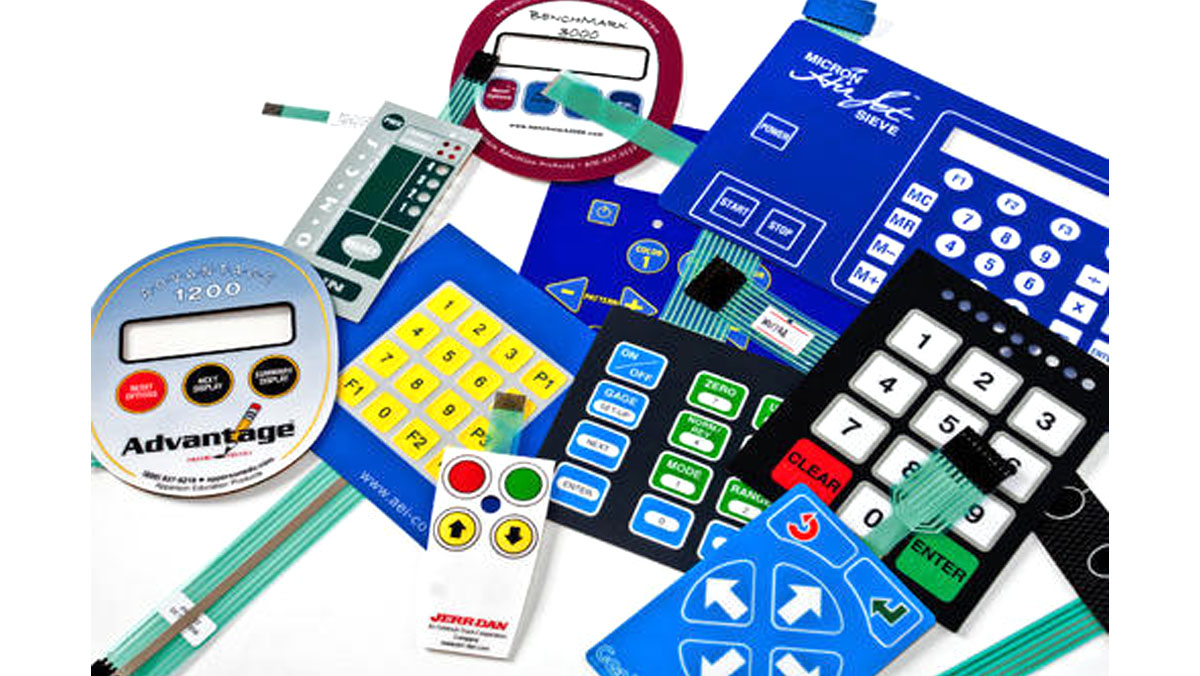The Role of Membrane Switches in Enhancing Device Functionality
The Role of Membrane Switches in Enhancing Device Functionality
Blog Article
Comprehending Membrane Switches Over: The Secret to Reputable and resilient Controls

What Are Membrane Buttons?
Membrane buttons are a sophisticated service in the world of interface modern technology, combining capability and design perfectly. These gadgets act as an interface in between individuals and electronic systems, integrating a number of parts right into a portable format. Normally created from flexible, slim layers of materials, membrane layer buttons are developed to reply to touch, allowing customers to connect with equipment and electronic tools effectively.
The key aspects of a membrane layer switch consist of a published circuit layer, visuals overlay, and a spacer layer that prevents unintended activation. The graphic overlay can be tailored to show brand identification or user preferences, improving appearances while making sure use. Membrane layer buttons are generally utilized in different applications, consisting of medical devices, customer electronics, and commercial devices, owing to their durability and resistance to ecological variables such as moisture and dust.
One of the key benefits of membrane buttons is their ability to withstand damage, making them perfect for high-traffic environments. Furthermore, they are light-weight and require marginal area, enabling innovative layouts in product growth. On the whole, membrane layer switches over stand for a efficient and practical selection for modern-day digital user interfaces, weding technology with user-centric design concepts.
How Membrane Switches Job
The procedure of membrane layer changes joints on a simple yet effective system that translates user input into digital signals. When a customer presses the switch, the top layer deforms, enabling a conductive component in the circuit layer to make call with a matching conductive pad on the underside of the visuals overlay.
The style of membrane buttons can differ, yet they usually incorporate domes or responsive elements to provide comments to the user, improving the general experience - membrane switch. The materials utilized in membrane buttons, such as polyester or polycarbonate, add to their sturdiness and resistance to ecological aspects, consisting of moisture and dirt. In addition, the printed circuits are typically encapsulated, which shields them from deterioration with time.
Advantages of Membrane Layer Switches

Furthermore, membrane buttons are understood for their sturdiness. Constructed from robust materials, they are resistant to dirt, moisture, and physical wear, which dramatically expands their life-span compared to typical mechanical switches. This sturdiness makes them particularly suitable for high-traffic environments and more applications needing longevity.
An additional substantial advantage is the ease of cleaning and upkeep. The smooth surface of membrane layer switches decreases dirt build-up and is frequently unsusceptible spills, making them suitable for setups that require regular sanitization.
Additionally, membrane switches use a structured profile, leading to a thinner layout that can be incorporated right into numerous tools without adding mass. This feature not just enhances the visual appeal but additionally contributes to an extra ergonomic product design.
Applications of Membrane Layer Switches
Flexible and easy to use, membrane layer switches find applications throughout a large variety of industries, including clinical tools, customer electronic devices, and industrial equipment. In the clinical area, these buttons are indispensable to gadgets such as diagnostic devices, person tracking systems, and infusion pumps, where reliability and simplicity of cleaning are look at this now crucial. Their capacity to keep and stand up to extreme settings functionality makes them ideal for such applications.

In customer electronics, membrane buttons are made use of in items like microwaves, cleaning equipments, and push-button controls - membrane switch. Their smooth style allows for instinctive interface, enhancing the general user experience while offering resilience and resistance to damage
Industrial equipment also takes advantage of membrane layer buttons, specifically in control panels for machinery and automation systems. These switches supply defense against dirt and wetness, ensuring regular efficiency in challenging atmospheres. Moreover, their customizable features permit suppliers to tailor them to specific operational requirements, enhancing performance and capability.
Selecting the Right Membrane Layer Switch
When choosing a membrane layer switch, it is necessary to consider different aspects that influence efficiency and viability for details applications. The primary considerations consist of environmental conditions, tactile feedback, longevity, and design requirements.
First, assess the operating setting; switches exposed to wetness, chemicals, or extreme temperature levels need particular materials to guarantee long life and capability. Next off, review the need for responsive comments. Depending upon user interaction, some applications might profit from a tactile action to verify activation, while others may favor a non-tactile design look at this web-site for aesthetic reasons.
Sturdiness is one more important factor; membrane layer switches should be designed to withstand constant usage, effects, and abrasion. Ensure the chosen switch can sustain the expected lifecycle, specifically in high-usage situations.

Final Thought
In verdict, membrane layer changes serve as essential components in the style of trusted and long lasting control systems across numerous sectors. Their compact design, integrated with robust building and customizable functions, enhances customer interaction while guaranteeing durability popular environments. The adaptability of membrane layer switches permits tailored remedies that fulfill details functional demands, reinforcing their importance in modern innovation. As sectors proceed to evolve, the importance of incorporating effective membrane button options can not be overstated.
Membrane layer changes represent an essential aspect of contemporary user interface design, mixing performance with strength in numerous applications.Membrane layer buttons are an innovative service in the realm of individual interface modern technology, incorporating capability and style effortlessly. Commonly created from versatile, slim layers of materials, membrane switches are created to react to touch, allowing individuals to communicate with equipment and digital devices properly.
The layout of membrane buttons can vary, yet they typically incorporate domes or responsive aspects to provide comments to the individual, improving the overall experience.In final thought, membrane layer changes offer as vital components in the style of dependable and long lasting control systems throughout numerous industries.
Report this page